Introduction
Braised grass carp, or hong shao yu in Chinese cuisine, is a beloved dish that embodies the heart of home-cooked comfort. Revered for its tender flesh, rich umami flavors, and aromatic sauce, this recipe transforms a simple fish into a culinary masterpiece. Grass carp, known for its mild sweetness and firm texture, absorbs flavors beautifully, making it ideal for braising. This method of slow-cooking in a fragrant liquid—a blend of soy sauce, rice wine, ginger, and spices—creates a harmonious balance of savory, sweet, and subtly spicy notes. Whether served at a family feast or a casual weeknight dinner, this dish bridges tradition and simplicity, offering a taste of China’s culinary heritage. In this guide, we’ll explore the techniques, ingredients, and tips to recreate this classic in your kitchen, ensuring a meal that delights the senses and nourishes the soul.
Ingredients: Building the Foundation of Flavor
To embark on this culinary journey, gather the following ingredients, each playing a pivotal role in the dish’s character:
- 1 whole grass carp (约1.5 kg/3.3 lbs): Cleaned, scaled, and cut into 5 cm (2-inch) thick steaks. Opt for fresh fish with clear eyes and shiny skin.
- 3 tbsp (45 ml) vegetable oil: For searing the fish to golden perfection.
- Aromatics:
- 4 garlic cloves, minced
- 2 tbsp (30 g) fresh ginger, julienned
- 1 medium onion, thinly sliced
- 3 scallions, white and green parts separated, chopped
- Sauce Base:
- 3 tbsp (45 ml) light soy sauce
- 1 tbsp (15 ml) dark soy sauce (for color)
- 2 tbsp (30 g) rock sugar or brown sugar
- 1/4 cup (60 ml) Shaoxing rice wine
- 1 tbsp (15 ml) black vinegar
- 1 tsp (5 g) Sichuan peppercorns (optional, for a tingly kick)
- 2 star anise pods
- 1 cinnamon stick
- Liquid:
- 2 cups (480 ml) chicken or fish stock
- 1/2 cup (120 ml) water
- Thickener:
1 tbsp (8 g) cornstarch mixed with 2 tbsp (30 ml) water (optional, for glossy sauce)
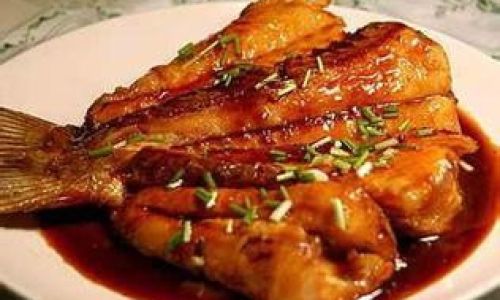
- Garnish:
- Fresh cilantro leaves
- Red chili peppers, thinly sliced (optional)
Step-by-Step Preparation: Crafting Perfection
Preparing the Fish
Begin by pat-drying the fish steaks with paper towels. This step is crucial—excess moisture prevents browning. Score the skin diagonally at 1 cm intervals to allow flavors to penetrate. Marinate the fish in 1 tbsp (15 ml) soy sauce, 1 tbsp (15 ml) rice wine, and a pinch of salt for 15 minutes. This brief marinade tenderizes the flesh and imparts a base layer of flavor.
Searing the Fish
Heat the vegetable oil in a large wok or deep skillet over medium-high heat. Once shimmering, gently place the fish steaks skin-side down. Resist the urge to move them; allow a golden crust to form (3–4 minutes). Flip carefully using a spatula and sear the other side until lightly browned. Remove the fish and set aside. Searing locks in moisture and prevents the fish from disintegrating during braising.
Sautéing Aromatics
In the same pan, reduce heat to medium. Add ginger, garlic, onion, and the white parts of scallions. Sauté until fragrant and translucent (2–3 minutes). Stir continuously to prevent burning. The goal is to mellow the raw edge of the aromatics while coaxing out their sweetness.

Building the Sauce
Deglaze the pan with Shaoxing wine, scraping up any browned bits. Add both soy sauces, sugar, vinegar, Sichuan peppercorns, star anise, and cinnamon. Stir until the sugar dissolves. This mixture forms the dish’s soul—sweet, salty, and aromatic. Adjust sweetness to taste; rock sugar lends a caramel-like depth, but brown sugar works as a substitute.
Braising the Fish
Return the fish to the pan, nestling it into the sauce. Pour in the stock and water, ensuring the liquid submerges three-quarters of the fish. Bring to a gentle simmer, then cover and reduce heat to low. Braising demands patience; let the fish cook undisturbed for 15–20 minutes. The slow simmer allows the flesh to absorb flavors while the collagen in the skin melts into the sauce, enriching its texture.
Thickening and Finishing
If a thicker sauce is desired, stir the cornstarch slurry into the pan and simmer for 2–3 minutes until glossy. Taste and adjust seasoning with a pinch of salt or a drizzle of vinegar if needed. Garnish with scallion greens, cilantro, and chili peppers for a burst of color and freshness.
Tips for Success: Elevating Your Dish
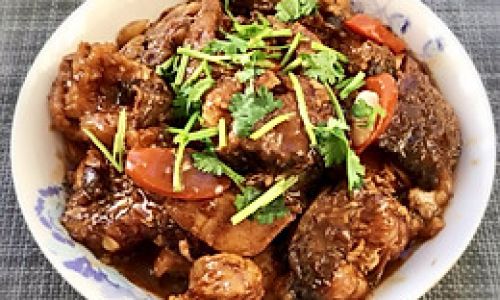
- Fish Selection: Opt for grass carp over other varieties—its meaty texture holds up during braising. If unavailable, substitute with sea bass or carp.
- Pan Frying: Use a non-stick pan or well-seasoned cast iron to prevent sticking. Ensure the oil is hot before adding the fish.
- Sauce Consistency: For a thicker gravy, increase cornstarch slightly. For a lighter broth, omit the cornstarch and serve as a soup.
- Spice Level: Adjust Sichuan peppercorns and chili peppers to taste. A single star anise imparts subtle warmth without overpowering.
- Pairing: Serve with steamed jasmine rice to soak up the sauce. Blanched bok choy or baby spinach adds a refreshing contrast.
Variations: Exploring Creativity
- Vegetable Additions: Toss in sliced carrots, mushrooms, or bell peppers during braising for added texture.
- Spicy Twist: Amplify heat with doubanjiang (fermented chili bean paste) or fresh bird’s-eye chilies.
- Sweet and Sour Profile: Add a splash of pineapple juice or tomato paste for a tangy-sweet variation.
- One-Pot Meal: Include cubed tofu or boiled eggs during the simmering stage for a complete meal.
Nutritional Highlights: A Wholesome Indulgence
Grass carp is a lean protein powerhouse, rich in omega-3 fatty acids, vitamin B12, and selenium. Braising preserves its nutrients while minimizing added fats. However, the soy sauce-based marinade contributes sodium, so those monitoring their intake may opt for low-sodium soy sauce. The dish’s ginger and garlic also offer anti-inflammatory benefits, making it a guilt-free pleasure when enjoyed in moderation.
Cultural Significance: More Than Just a Meal
In Chinese households, hong shao yu symbolizes abundance and togetherness. Served during Lunar New Year celebrations, weddings, or family reunions, it embodies the philosophy of yuan (圆), or completeness, reflecting the hope for unity and harmony. The act of sharing this dish from a communal platter fosters connection, with elders often serving the choicest pieces to younger generations—a gesture of love and respect.
Conclusion: The Joy of Home Cooking
Braised grass carp is more than a recipe; it’s a testament to the art of nurturing through food. Each step—from marinating to simmering—invites mindfulness and care, transforming simple ingredients into a feast that resonates with tradition. Whether you’re a novice cook or a seasoned chef, this dish rewards patience and creativity. So, tie on your apron, gather your loved ones, and savor the magic of homemade hong shao yu. As the saying goes, “The best flavors are those made with heart.” 🌿🍲
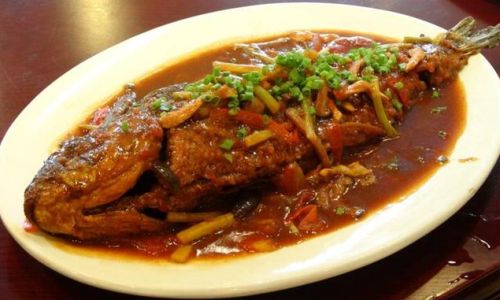
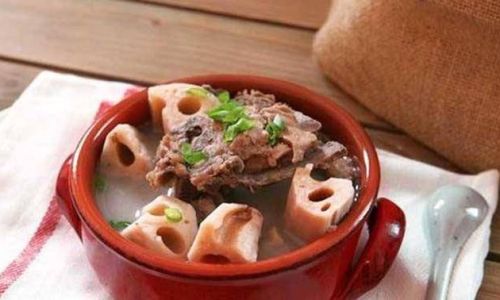
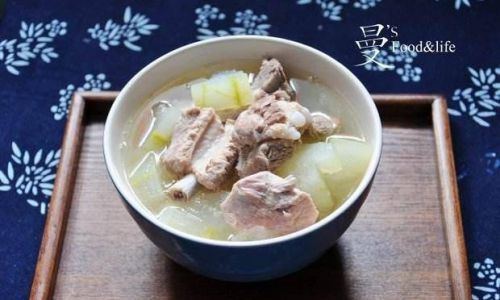
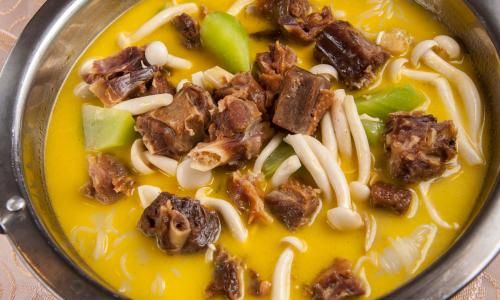
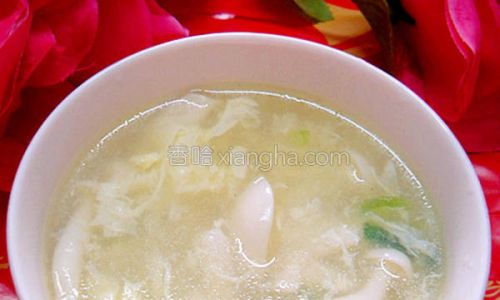
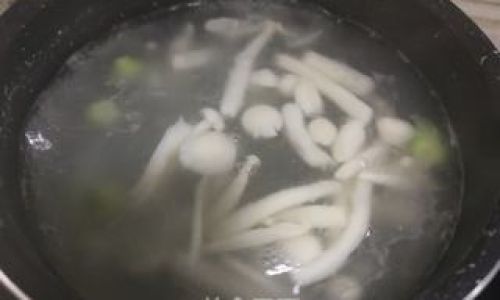
0 comments